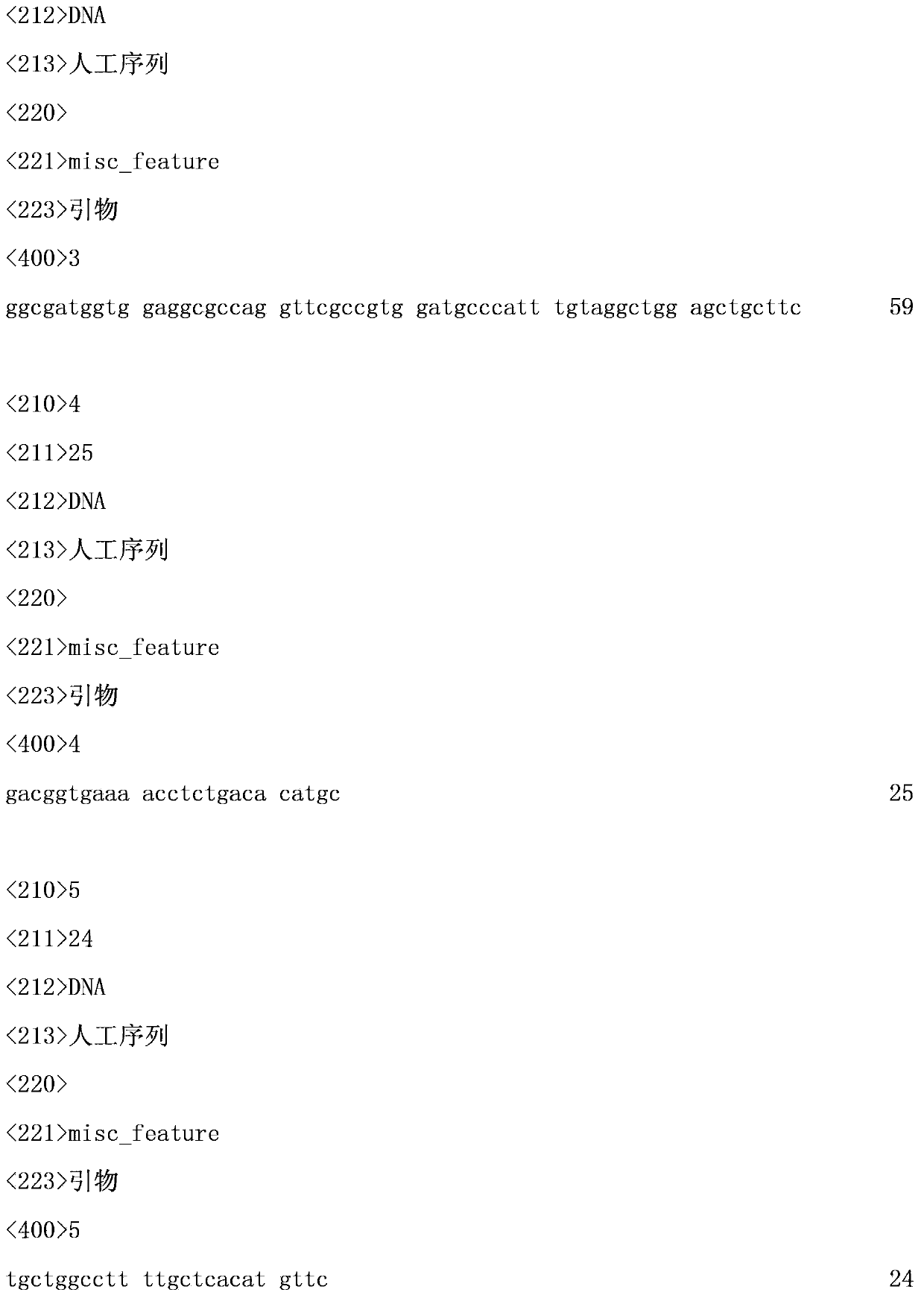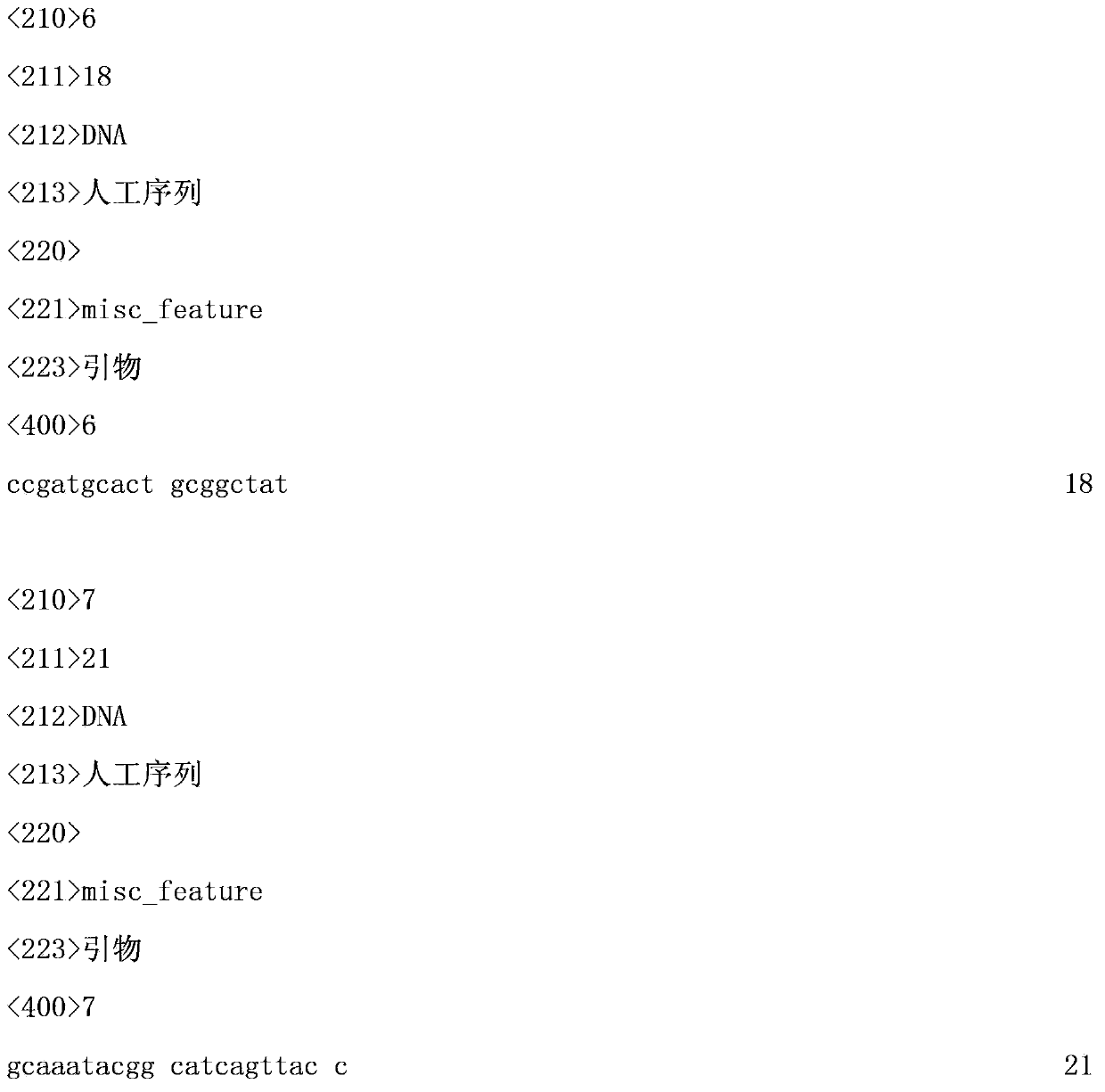Genetic recombination method of klebsiella pneumoniae by utilizing short homologous sequence
A pneumococcus, homologous sequence technology, applied in the field of gene recombination, to achieve the effect of simple operation
- Summary
- Abstract
- Description
- Claims
- Application Information
AI Technical Summary
Problems solved by technology
Method used
Image
Examples
preparation example Construction
[0034] Preparation of homologous recombination fragments: two rounds of PCR and one-step cloning.
[0035] The first round of PCR: Design primers according to the description in [Gust B., et al., PCR-targeting system in streptomyces coelicolor A3(2). John Innes Centre: Norwich, 2002.], the 5' end of the primer is short Homologous sequence, use the plasmid carrying the resistance gene as a template to amplify the resistance gene. If the resistance marker needs to be eliminated after recombination, FRT sequences need to be added to both ends of the resistance gene to be amplified.
[0036] Cloning: The fragment amplified by the first round of PCR was connected to the cloning plasmid by TA cloning, transformed into Escherichia coli, and positive recombinants were screened.
[0037] The second round of PCR: design primers upstream and downstream of the cloning site, use the positive recombinants obtained by cloning screening as templates, and amplify to obtain homologous recombina...
example 1
[0043] Using the method of the present invention, the ATP-dependent dihydroxyacetone kinase gene dhak1 is knocked out in the Klebsiella pneumoniae GMCC1.6366 strain (the GMCC1.6366 strain is preserved by the China General Microorganism Collection Center and has ampicillin resistance), Specific steps are as follows:
[0044] 1) Preparation of GMCC1.6366 Competent Cells
[0045] The operation was carried out according to the "production of Klebsiella pneumoniae competent cells" in the specific embodiment described above.
[0046] 2) The pDK6-red plasmid was transferred into GMCC1.6366 strain
[0047] Take 2 μL of the pDK6-red plasmid, mix it with the prepared 100 μL GMCC1.6366 competent cells, set the voltage at 2000 volts, and use a 2 mm electroporation cuvette for electroshock transformation. After transformation, add 1 ml of LB liquid medium to the cells and recover on a 37°C shaker at 200 rpm for 1 hour. Then, spread it on the LB solid plate containing 50mg / L kanamycin, c...
PUM
 Login to View More
Login to View More Abstract
Description
Claims
Application Information
 Login to View More
Login to View More - R&D
- Intellectual Property
- Life Sciences
- Materials
- Tech Scout
- Unparalleled Data Quality
- Higher Quality Content
- 60% Fewer Hallucinations
Browse by: Latest US Patents, China's latest patents, Technical Efficacy Thesaurus, Application Domain, Technology Topic, Popular Technical Reports.
© 2025 PatSnap. All rights reserved.Legal|Privacy policy|Modern Slavery Act Transparency Statement|Sitemap|About US| Contact US: help@patsnap.com



